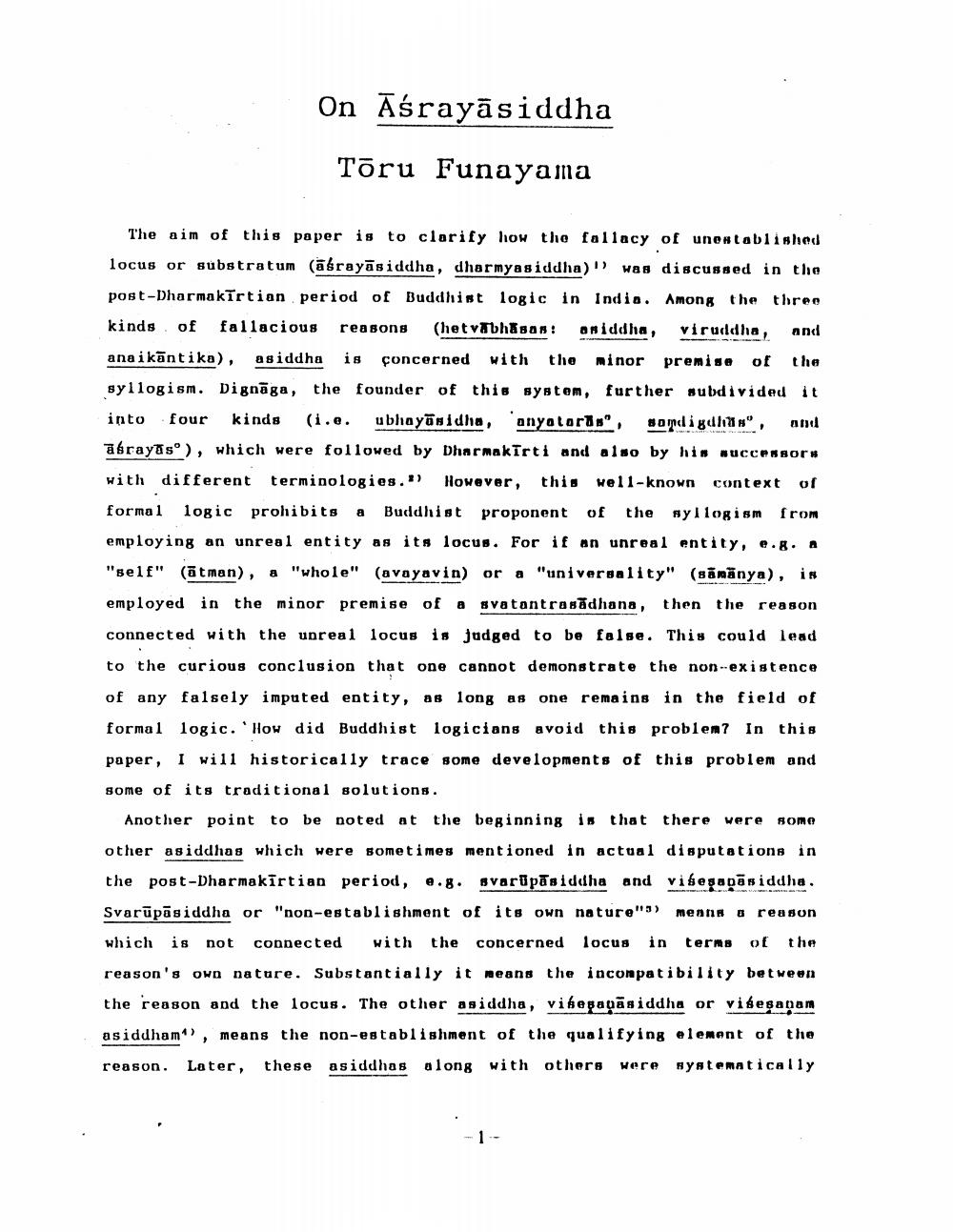________________
On Aśrayāsiddha
Tōru Funayama
The aim of this paper is to clarify how the fallacy of unestablished locus or substratum (abrayāsiddha, dharmyas iddha)) was discussed in the post-Dharmakīrtion period of Buddhist logic in India. Among the three kinds of fallacious reasons (het vbh&sas: aniddha, viruddha, and ana ikāntiko), asiddha is concerned with the minor premise of the syllogism. Dignāga, the founder of this system, further subdivided it into four kinds (i.e. ubhayās idha, anyatordo', sopdagelii", and abrayso), which were followed by Dharmakīrti and also by his successors with different terminologies." However, this well-known context of formal logic prohibits a Buddhist proponent of the syllogism from employing an unreal entity as its locus. For if an unreal entity, e. 8. A "self" (ātman), a "whole" (avayavin) or a "universality" (sāmänya), is employed in the minor premise of a svatontrasādhana, then the reason connected with the unreal locus is judged to be false. This could lead to the curious conclusion that one cannot demonstrate the non-existence of any falsely imputed entity, as long as one remains in the field of formal logic. 'How did Buddhist logicians avoid this problem? In this paper, I will historically trace some developments of this problem and some of its traditional solutions.
Another point to be noted at the beginning is that there were some other asiddhas which were sometimes mentioned in actual disputations in the post-Dharmakīrtian period, 6.8. svarūpīsiddha and viseşapāsiddha. Svarūpās iddha or "non-establishment of its own nature") means a reason which is not connected with the concerned locus in terms of the reason's own nature. Substantially it means the incompatibility between the reason and the locus. The other asiddha, vibepapāsiddha or visesapam asiddham), means the non-establishment of the qualifying element of the reason. Later, these asiddhas along with others were systematically




